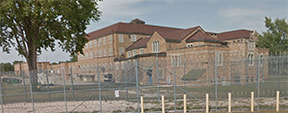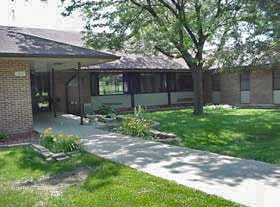|
The Robert E. Ellsworth Correctional Center for women has more than twice as many inmates as it was designed to hold. The Prairie du Chien Correctional Institution is operating at 156% of capacity. (When the U.S. Supreme Court told California to reduce its prison population, the Court said the state could not run its prisons at more than 137% of capacity. ) At the very crowded Marshall E. Sherrer Center (175% of capacity) in Milwaukee, the lack of space means inmates don't get needed reentry programming. Sherrer also has inadequate refrigeration for food, according to a Department of Corrections budget request. The Legislature and Gov. Walker rejected the request, instead appointing a committee to study prison needs. This is part 6 in our series on Wisconsin prisons, how crowded they are, and what the Department of Corrections said is needed to improve, repair, and maintain them. Here is Part 1, Part 2, Part 3, Part 4, and Part 5. As always, this primer does not really address the consequences of the crowding and physical shortcomings of the institutions – the impacts on inmates and staff. But we sure hope you will keep them in mind as you consider the price of mass incarceration. Institution: Prairie du Chien Correctional Institution, Prairie du Chien Classification: Medium security Capital budget request: None Institution: Marshall E. Sherrer Correctional Center, Milwaukee Classification: Minimum security Capital budget request: $26,718,000 Status: Rejected From the request: This project would construct a new male correctional center of approximately 53,000 GSF, which will include housing to accommodate 200 inmates, food preparation and dining, visiting, programming, classroom, health services unit, temporary lock-up cell, active and passive recreation, staff offices, basement, and storage. ... The Marshall E. Sherrer Correctional Center was constructed in 1980 to house 30 inmates and now houses 58. Based on the number of inmates who will release to Milwaukee County, a recommendation to increase the number of beds at the center was documented in the 2009 10- year plan. Currently the only program/educational area available is the dining area, which also serves as the center’s visiting room. Due to the lack of existing inmate activity space in the center, inmates are not able to have regular access to reentry programming which is critical to successful reentry. Construction of this facility will provide additional 142-beds to place minimum security inmates with jobs in the community and provide skills to inmates to allow for a more effective transition into the community. Due to the lack of existing inmate activity space in the center, inmates are not able to have regular access to reentry programming which is critical to successful reentry. A number of concerns with the existing facility have been identified and are as follows:
The Center has insufficient storage space for perishable and frozen foods. A walk-in cooler and freezer does not exist. The department could continue with the current “older” facility, but this does not increase capacity nor does it address the fact that programs continue to operate at less than optimum efficiency due to a shortage of space. Another alternative would be to provide additional space outside of Milwaukee County. However, it is important for offenders who previously lived in the community to be given the opportunity to re-establish family relationships and support mechanism within the community to which they will be released. The department could continue with the current “older” facility, but this does not increase capacity nor does it address the fact that programs continue to operate at less than optimum efficiency due to a shortage of space. Institution: Robert E. Ellsworth Correctional Center, Union Grove
Classification: Minimum security Capital budget request: None
0 Comments
Your comment will be posted after it is approved.
Leave a Reply. |
Donate
Help WJI advocate for justice in Wisconsin
|
Copyright © 2024 Wisconsin Justice Initiative Inc.
The Wisconsin Justice Initiative Inc. does not endorse candidates for political office. The Wisconsin Justice Initiative Inc. is a 501(c)3 organization.
The Wisconsin Justice Initiative Inc. does not endorse candidates for political office. The Wisconsin Justice Initiative Inc. is a 501(c)3 organization.







 RSS Feed
RSS Feed